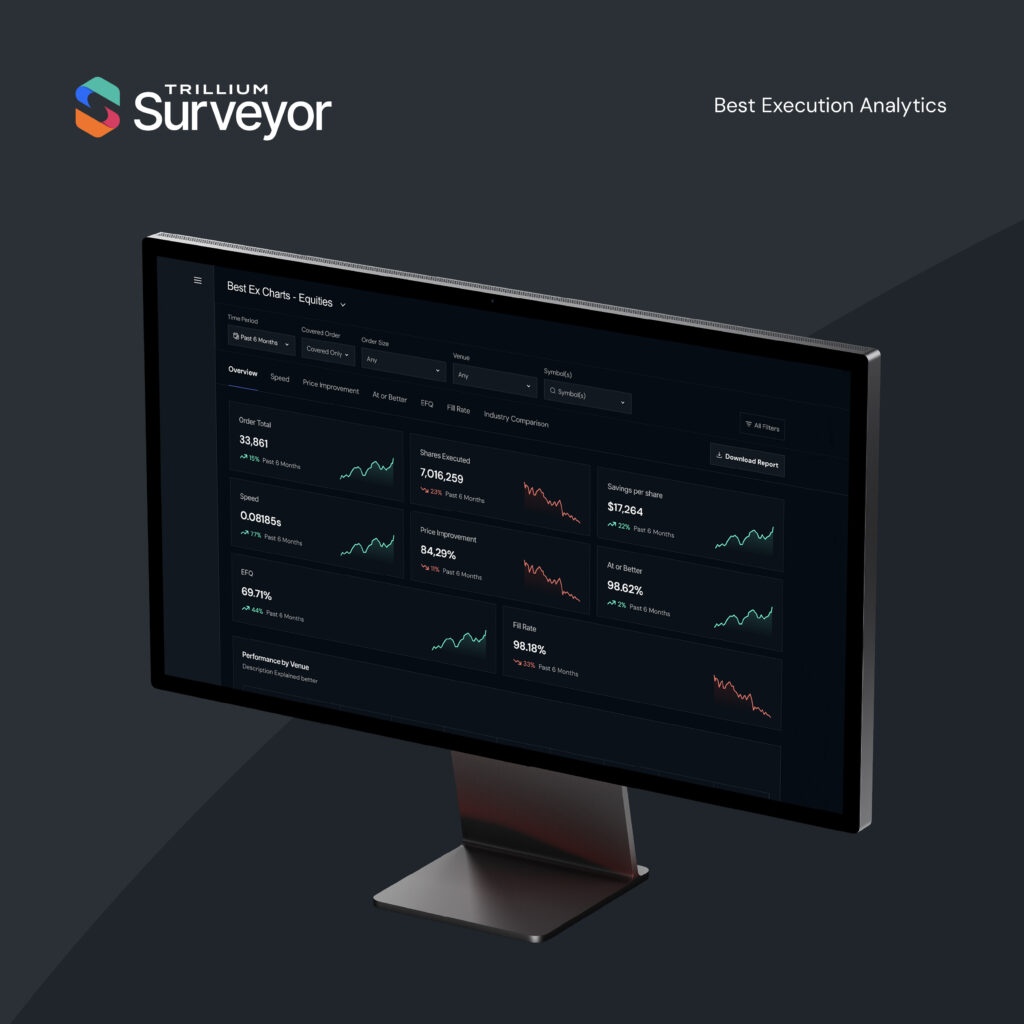Welcome to the July edition of The Monitor, our monthly look at the evolving trade compliance landscape. This issue focuses on how trading and compliance teams are adapting to shifts in oversight while maintaining strong surveillance and best execution practices.
This month, we’re monitoring AI’s potential in compliance technology and the importance of thoughtful, balanced adoption.
At the same time, U.S. leadership continues to signal a “light touch” approach to oversight, favoring innovation-friendly frameworks over heavy-handed regulation. Yet amid these shifts, a clear industry standard continues to serve as the north star: firms are expected to demonstrate proactive, data-driven compliance and execution practices. That expectation isn’t going away, and it continues to guide how leading teams invest in technology and structure their programs.
We also break down what we think should be on your regulatory radar, including the SEC’s amended Rule 605, the withdrawal of proposed best execution regulations, and recent commentary on AI’s role in market oversight.
Turning to recent product developments, we’re seeing growing momentum around Surveyor Best Ex, which launched just a few weeks ago. Early adopters are finding immense value in having best execution analytics and trade surveillance together in one platform creating a unified, streamlined view.
We hope you find this issue useful as you navigate what’s next for trade compliance.
– Lisa Balter Saacks, President at Trillium Surveyor
Trading Newsbeat
SEC Rule Withdrawal and What It Means for Best Execution & Surveillance
On June 12, 2025, the SEC withdrew 14 proposed rules including Regulation Best Execution and broader initiatives on broker-dealer transparency, cybersecurity, and predictive analytics. The best execution proposal intended to formalize requirements through written policies, annual reviews, quarterly assessments, and board reporting. Its removal signals a shift toward a lighter-touch regulatory approach under new leadership. Importantly, this withdrawal affects not only best execution requirements but also initiatives aimed at enhancing trade surveillance frameworks.
For compliance leaders, this raises a key question: Does the withdrawal reduce compliance risk or lessen incentives to invest in robust frameworks? Our view is that, despite regulatory shifts, continued investment in intuitive, effective compliance programs remains essential to keep pace with evolving market structures and expectations. Even without a formal mandate, market and competitive pressures make strong best execution analytics vital for managing risk and demonstrating regulatory responsibility.
AI Considerations for Compliance Technology
AI has quickly become a key topic across capital markets, including within trade surveillance and best execution workflows. From what we’re seeing, firms are beginning to explore practical use cases for AI to enhance effectiveness, reduce friction, and surface new insights.
We’re observing growing interest in using AI to:
- Reduce alert fatigue
- Spot patterns in execution data
- Suggest metrics for outlier reviews
- Streamline exception workflows
Regulators like the CFTC have acknowledged AI’s potential while also emphasizing that human accountability remains essential. “AI said so” won’t satisfy regulatory scrutiny.
As AI capabilities evolve, we believe the most effective compliance programs will implement these tools thoughtfully, with clear governance, documentation, and regulation in place. This is an area we’re continuing to monitor closely as part of Surveyor’s development priorities.
Regulatory Radar
- SEC Withdraws Reg Best Execution Proposal: The SEC dropped its proposed federal best execution framework on June 12, 2025. Firms are continuing to use FINRA Rule 5310 as the guiding standard. (sec.gov)
- Amended SEC Rule 605 – Compliance Deadline: December 14, 2025: Expanded reporting requirements include odd lots, fractional shares, and time-to-execution metrics. Firms should review data pipelines and confirm that technology partners are aligned. (sec.gov)
- AI in Compliance and Surveillance: CFTC Commissioner Kristin N. Johnson highlighted AI’s potential for detecting manipulation, while cautioning that oversight and transparency are critical. (cftc.gov)
- Short Sale Reporting Rule (Rule 13f-2): SEC delays compliance deadline to February 2026 for institutional managers to confidentially report short positions on Form SHO. Impacts trade data capture and reporting infrastructure. (sec.gov)
Poll: Report for Surveyor
How is your firm preparing for the SEC’s 13f-2 short sale reporting rule ahead of the February 2026 deadline?
- Building an internal solution
- Evaluating third-party vendors
- Still assessing requirements
- Not started yet
Products and Services

Surveyor’s best execution analytics engine is helping firms tackle challenges caused by legacy systems and manual, infrequent reporting.
What’s standing out to firms?
Surveyor Best Ex is resonating with teams looking to eliminate weeks of manual data prep with built-in, instant calculations and clear visualizations. Instead of sorting through trade files and spreadsheets, users are surfacing meaningful insights with a single click.
Our Social Calendar
Earlier this month, Surveyor President Lisa Balter Saacks presented to Columbia University’s International Business & Finance students, where nearly 40% expressed interest in trading careers, many already using platforms like Webull and Robinhood.

Let’s Connect
With shifting regulations but continued expectations, many firms are rethinking how they approach best execution and trade surveillance. We’re seeing teams use Surveyor to streamline analytics, meet compliance needs, and reduce manual review all in one place. Curious how Surveyor can help your firm overcome your unique challenges and meet your goals? Contact us here and we’ll set up some time to discuss.